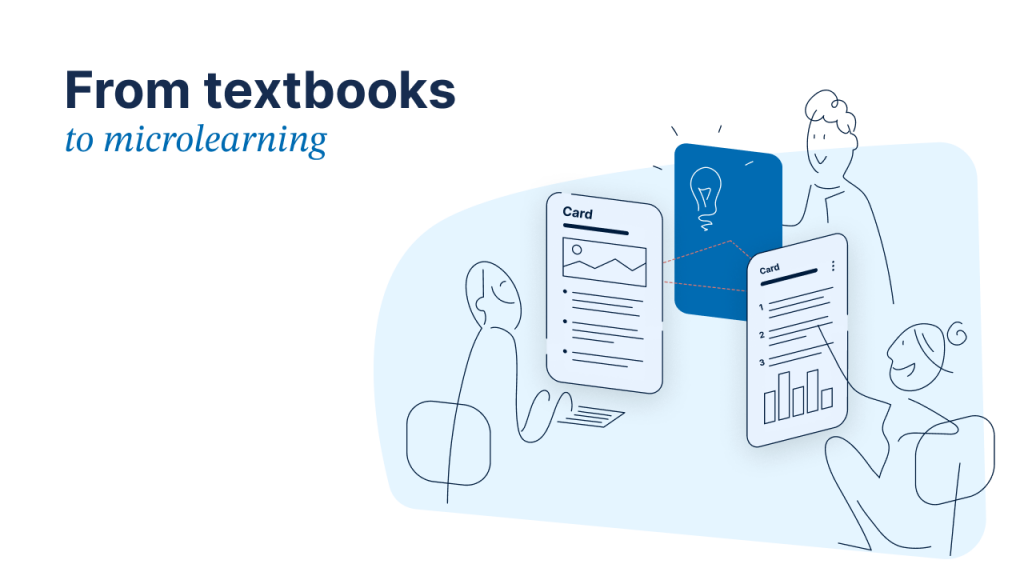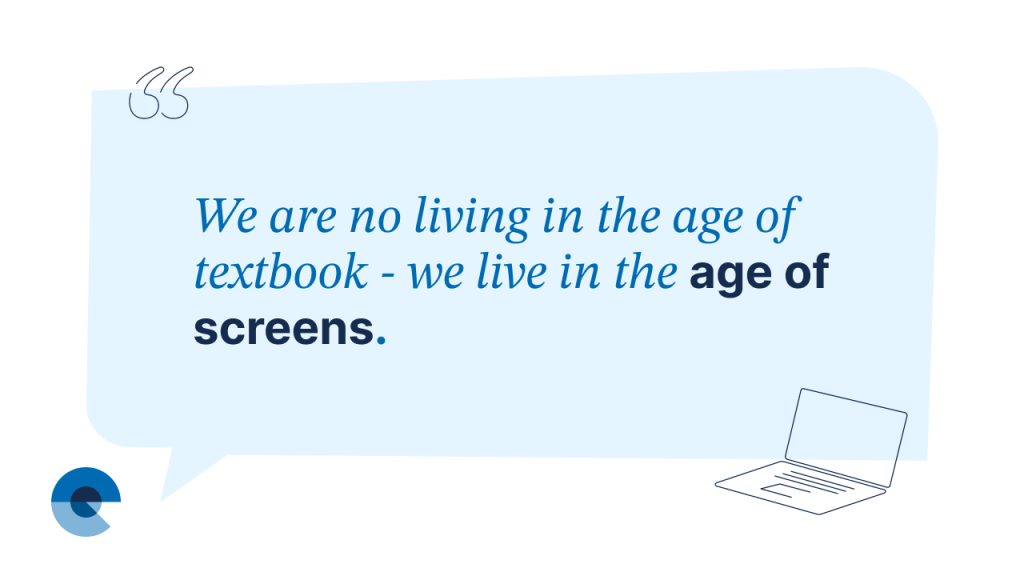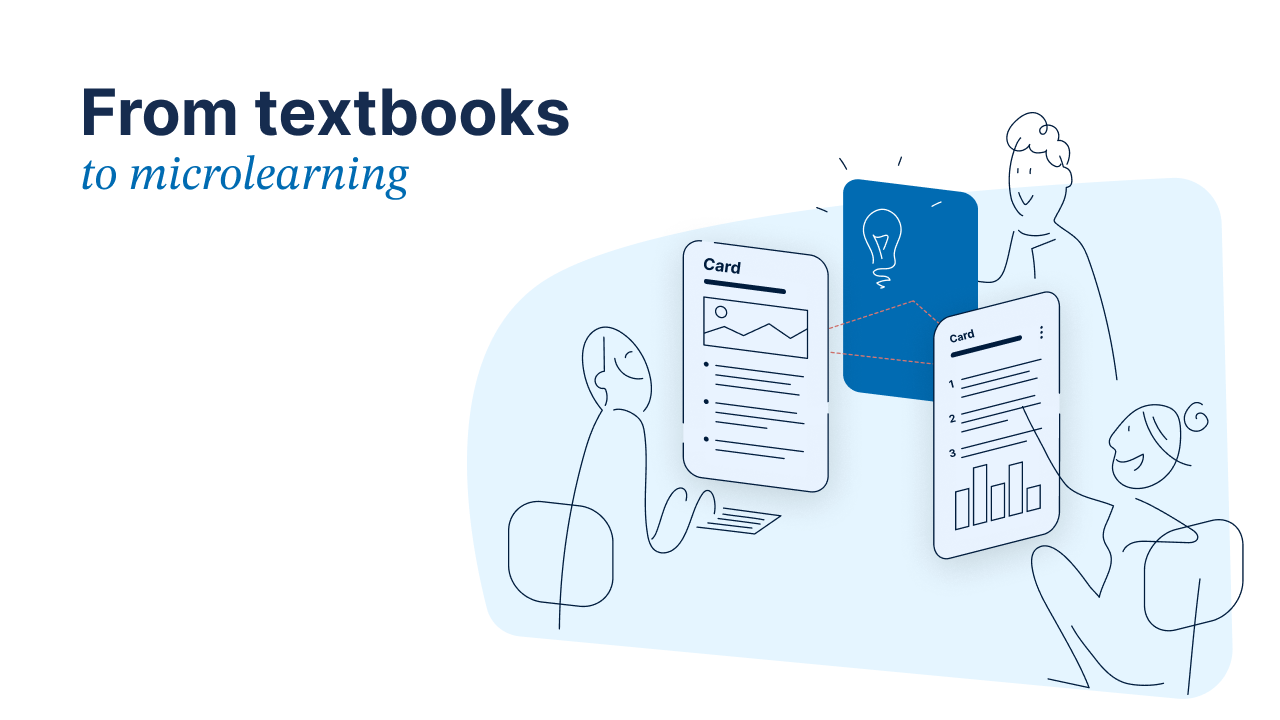The past two decades have witnessed a quiet revolution in the way knowledge is acquired, stored, and applied. In particular, academic and medical education — traditionally grounded in comprehensive textbooks, long-form lectures, and cumulative memorisation — is undergoing a profound shift. Today, the learner’s world is increasingly defined by short attention spans, real-time access to information, and fragmented schedules.
We are no longer living in the age of textbook – we live in the age of screens.

The Decline of the Textbook and the Rise of Cognitive Offloading
It is no exaggeration to suggest that few students today will read a monograph cover to cover — and even fewer will carry one. Psychologists have long reported that, in cognitively taxing situations, working memory is limited. Some cite the influential research by George A. Miller (1956), who proposed that our working memory can hold around seven items—plus or minus two—before performance declines. But in our hyperconnected modern environment, we may not even have the luxury of managing seven items for an extended period.
The weight, both literal and cognitive, has been transferred to digital devices. This is where the so-called Google Effect comes into play: in an experiment published in *Science* (Sparrow, Liu, & Wegner, 2011), it was demonstrated that when participants expected to have future access to information (for example, through a search engine), they tended to store less of that information in their own memory. Rather than recall the facts, learners began recalling how and where they could retrieve them. While one might mourn the perceived loss of memorisation, this also indicates an adaptive shift: the brain is optimising resources in an information-rich environment.
In modern academic life, learners are frequently expected to acquire knowledge at the point of need. In practice, this often means a quick scan of a database, a Wikipedia article (don’t pretend you haven’t), or a trusted online summary in between meetings, rounds, or coffee queues. Traditional learning, with its lengthy chapters and linear structures, is poorly suited to this reality.
Learning has become just-in-time, reactive, and highly contextual — a model that demands new pedagogical frameworks and, crucially, new tools.
Microlearning: An Adaptive Response to Cognitive Overload
Microlearning — the practice of delivering content in small, focused units — has emerged as a response to this shift in learner behaviour. Though the term may sound like something invented by a Silicon Valley startup between yoga sessions, the underlying principles are supported by well-established cognitive science.
Short bursts of content, especially when spaced over time and delivered in context, improve retention and engagement. The mechanisms are familiar: active recall, spaced repetition, contextual anchoring. What is different now is the medium through which these techniques are delivered — by a screen rather than by a textbook.
To put it plainly: it is no longer sufficient to assume that learners will sit down for an hour of undisturbed study. One must instead design learning objects that can survive (and ideally, thrive) in a three-minute window between clinical cases or during a brief moment on public transport.
Microlearning is not merely a trend — it is, increasingly, a necessity.

It is scientifically proven
Far from being merely fashionable, microlearning is supported by robust findings in neuroscience and cognitive psychology. For instance, the technique capitalises on spaced repetition, a method wherein exposure to the same material is distributed over intervals rather than concentrated in one sitting. Neurophysiological research indicates that spaced repetition aids in moving information from short-term to long-term memory by reinforcing neural connections in the hippocampus, a critical structure for memory consolidation.
Additionally, active recall strategies—where learners must retrieve information rather than simply re-read or re-listen—demonstrably strengthen synaptic pathways. Each act of recall is akin to performing a mental “rehearsal,” stimulating plastic changes in the brain and increasing the likelihood of retaining that memory. Microlearning tools are particularly well-suited to encourage repeated testing of small chunks of content, making the learning both more efficient and more durable.
Finally, microlearning is consistent with cognitive load theory, which posits that working memory is limited and learning is most effective when instructional design avoids overwhelming that capacity. By breaking topics into discrete elements, microlearning aligns with the brain’s preference for digestible pieces rather than extended segments of complex information.
The Missing Tool: Where is the Software that Supports Microlearning in a Personal Knowledge Space?
Despite the widespread acceptance of microlearning principles, most educational technologies remain anchored in outdated paradigms. PDFs still reign. Content is siloed in long documents. Annotation is often static. Quiz tools are stand-alone apps without links to our personal knowledge library. And microlearning tools too. Tools without content.
What is needed is a new class of tool: one that accepts — even embraces — the fractured, rapid, and contextual nature of learning today. A tool that moves beyond simply storing documents and instead fosters meaningful interaction with knowledge. A tool that is using what you already have collected as your personal important knowledge.
This is where Elumity enters the picture.
Cards and Quizzes: Elumity’s Approach to Sustainable Microlearning
Elumity was designed with the realities of modern academic life in mind. Believing in a very personal collection of knowledge, like a jigsaw puzzle, Elumity: 1) brings a library to store PDFs in the most visually appealing way, 2) collects references, abstracts, and other academic information along with the PDF, 3) provides a medium to collect and connect the information processed from multiple PDFs of the same topic, ready to append, share, and link back to the original sources, and 4) includes a quiz tool to test what you should know from what you saved as your personal knowledge.
At its core are two foundational elements: cards and quizzes, both intended to structure and reinforce knowledge in a way that aligns with how we actually learn.
Cards: Contextualised Fragments of Knowledge
The card in Elumity is a structured learning unit — a place to store an idea, a key finding, a clinical insight, or a question. Unlike a traditional note, it is connected: to its source (often a PDF or reference), to other related ideas, and to the broader conceptual framework the learner is building.
Cards may be private, shared with peers, or published to a central library — allowing for collective knowledge-building without the usual chaos of group chats and email threads. One might think of them as intellectual building blocks — modular, elegant, and far less likely to be forgotten than a highlighted sentence in a PDF.
Quizzes: Active Recall, Made Effortless
In parallel, Elumity’s quiz module offers a novel integration: content highlighted within documents or extracted into cards can be transformed automatically into quiz questions. Using AI, the system creates prompts for self-testing — a pedagogical method whose effectiveness is well established, and yet rarely implemented with ease.
Importantly, the quizzes are not generic or detached from context; they are intimately tied to the user’s personal learning process. This alignment between content and assessment is central to long-term retention.
A Closing Thought (with Apologies to the Textbook)
Of course, no single method can replace a lifetime of scholarly engagement. There will always be room for thoughtful reading, deep contemplation, and comprehensive study. But for day-to-day learning and professional development—especially in disciplines that evolve with astounding speed—microlearning represents a powerful supplement.
Microlearning is not a lesser form of education. It is a distilled, agile form of learning that matches our contemporary needs. But like all good forms, it requires good tools. Elumity, with its card-based system and integrated quiz engine, offers such a tool — one that recognises the value of structure and flexibility, depth and speed, memory and meaning.
For those navigating the ever-growing demands of academic life — whether student, doctor, scientist, or researcher — Elumity may just be the study companion you didn’t know you needed.
